|
Data: 92
Global Indexes & Rankings |
Updated: 12 June 2015 |
|
Below is a list of indexes and rankings (organized into 10 categories) that
allow the comparison of all (or many) countries of the world according to the respective composite measures. The indexes cover demographic, economic, social, cultural, political,
military and environmental
dimensions of global change. The links usually point to the latest revision of each index and to additional information
(methodology, publications, etc.) |
|
Most recently listed indexes and rankings: |
|
Index of Economic
Complexity (Added 26 May 2015) |
|
Open government
index (Added 20 May 2015) |
|
World values survey (Added 19 March 2015) |
|
Global open data index (Added 20 January 2015) |
|
Climate Change
Performance Index
(Added 11 December 2014) |
|
Global University Ranking
(Added 20 November 2014) |
|
Shadow economies of 162 countries
(Added 11 October 2014) |
|
World competitiveness ranking
(Added 10 October 2014) |
|
Top-50 business schools
(Added 9 October 2014) |
|
World risk index
(Added 3 October 2014) |
|
Networked
readiness index
(Added 3 October 2014) |
|
Global energy architecture performance index
(Added 3 October 2014) |
|
Financial
development index
(Added 3 October 2014) |
|
Good country index
(Added 1 October 2014) |
|
Global built environment wealth index
(Added 30 September 2014) |
|
World giving index (Added 22 September
2014) |
|
World slavery index (Added 17 August
2014) |
|
|
|
|
|
 |
Human
development, social development, public health |
|
|
 Human Development Index (HDI)
(United Nations Development Programme) Human Development Index (HDI)
(United Nations Development Programme)
The Human Development Index (HDI) is a composite measure of
health, education and income that was introduced in the first Human Development Report in 1990 as an alternative to purely
economic assessments of national progress, such as GDP growth. |
|
 Human Assets Index
(Foundation for International Development Study and Research, University of Auvergne and
CNRS, France) Human Assets Index
(Foundation for International Development Study and Research, University of Auvergne and
CNRS, France)
The Human
Assets Index (HAI) is a composite index of education and health for 147 developing countries.
Results Report ...
Data ...
 Human Assets Index FOS 2014 (Excel) Human Assets Index FOS 2014 (Excel)
 Human Assets Index WFG 2014 (Excel) Human Assets Index WFG 2014 (Excel)
 Human Assets Index 2011 Human Assets Index 2011 |
|
 Multidimensional Poverty Index (UNDP) Multidimensional Poverty Index (UNDP)
The
Multidimensional Poverty Index identifies multiple deprivations at the individual level in health,
education and standard of living. It uses micro data from household surveys, and€”unlike the Inequality-adjusted Human
Development Index€”all the indicators needed to construct the measure must come from
the same survey. Each person in a given household is classified as poor or non-poor depending on the
number of deprivations his or her household experiences. This data are then aggregated into the national
measure of poverty.
Data ... |
|
 Poverty Gap at $2 a Day (The World Bank) Poverty Gap at $2 a Day (The World Bank)
The
poverty gap is the mean shortfall from the poverty line (counting the non-poor as having zero shortfall), expressed as a
percentage of the poverty line. This measure reflects the depth of poverty as well as its incidence.
More ...
More ... |
|
 Poverty Headcount Ratio at $2 a Day (The World Bank) Poverty Headcount Ratio at $2 a Day (The World Bank)
The
population below $2 a day is the percentage of the population living on less than $2.00 a day at 2005 international
prices. As a result of revisions in PPP exchange rates, poverty rates for individual countries cannot be compared with
poverty rates reported in earlier editions.
More ... |
|
 Quality of Life Index
(Economist Intelligence Unit, UK) Quality of Life Index
(Economist Intelligence Unit, UK)
The index
links the results of subjective life-satisfaction surveys to the objective determinants of quality of life across
countries. |
|
 Global Study on Homicide (UNODC - UN Office on Drugs and Crime, Austria) Global Study on Homicide (UNODC - UN Office on Drugs and Crime, Austria)
Collection and analyses of data on intentional killings for all countries worldwide. |
|
 Global Aging Preparedness Index (Center for Strategic & International Studies) Global Aging Preparedness Index (Center for Strategic & International Studies)
Provides
a comprehensive quantitative assessment of the progress that countries worldwide are making in preparing for global aging,
and especially the old-age dependency dimension of the challenge. |
|
 Global Youth Wellbeing Index (Center for Strategic & International Studies / International Youth Foundation) Global Youth Wellbeing Index (Center for Strategic & International Studies / International Youth Foundation)
The Index
ranks 30 high- to low-income countries in five regions that represent nearly 70 percent of the world€™s youth. The Index is
comprised of 40 indicators grounded in economic and social growth and positive youth development theory and practice.
More ... |
|
 Social Progress Index (Center for Strategic & International Studies / International Youth Foundation) Social Progress Index (Center for Strategic & International Studies / International Youth Foundation)
The Social Progress Index focuses on three distinct (though related) questions: 1. Does a
country provide for its people€™s most essential needs? 2. Are the building blocks in place for individuals and communities
to enhance and sustain wellbeing? 3. Is there opportunity for all individuals to reach their full potential? These three
questions define the three dimensions of Social Progress: Basic Human Needs, Foundations of Wellbeing, and Opportunity.
More ... |
|
 Global Slavery Index (The Walk Free Foundation, Australia) Global Slavery Index (The Walk Free Foundation, Australia)
The
Global Slavery Index provides a ranking of 162 countries around the world, based on a combined measure of three factors:
estimated prevalence of modern slavery by population, a measure of child marriage, and a measure of human trafficking in
and out of a country.
More ...
More ... |
|
 Global Gender Gap Index
(World Economic Forum; Switzerland, USA, China) Global Gender Gap Index
(World Economic Forum; Switzerland, USA, China)
There are three basic concepts underlying the Global Gender Gap Index. First, it focuses on measuring gaps
rather than levels. Second, it captures gaps in outcome variables rather than gaps in means or input variables. Third, it
ranks countries according to gender equality rather than women€™s empowerment.
Results ...
|
|
 Gender Inequality Index
(United Nations Development Programme - UNDP) Gender Inequality Index
(United Nations Development Programme - UNDP)
The Gender Inequality Index is similar in method to the Inequality-adjusted Human
Development Index. It can be interpreted as a percentage loss to potential human development due to shortfalls in the
dimensions included. The world average score on the Gender Inequality Index is 0.463, reflecting a percentage loss in
achievement across the three dimensions due to gender inequality of 46.3%. The index includes the following indicators:
maternal mortality ratio; adolescent fertility rates; educational attainment statistics; parliamentary representation; and
labor market participation.
Results ... |
|
 Happy Planet Index
(World Economic Forum; Switzerland, USA, China) Happy Planet Index
(World Economic Forum; Switzerland, USA, China)
The Happy Planet Index results show the extent to which 151 countries across the globe
produce long, happy and sustainable lives for the people that live in them. The overall index scores rank countries based
on their efficiency, how many long and happy lives each produces per unit of environmental output.
More...
More ...
Comment: The Happy Planet Index
yields some rather strange
results - for instance, Colombia ranks #3 of all countries analyzed. Victims of Colombia's drug cartels might not feel so
happy. The country is still devastated by an ongoing low intensity war among rival narco-paramilitary groups, guerrillas
and drug cartels fighting each other to increase their influence. They also fight against the Colombian government that
struggles to stop them. See:
Illegal drug trade in Colombia. |
|
 World Happiness Report - Ranking of
Countries
(United Nations Sustainable Development Solutions Network) World Happiness Report - Ranking of
Countries
(United Nations Sustainable Development Solutions Network)
The World Happiness Report is based on the results of Gallup surveys in more than 150
countries. On a scale running from 0 to 10, people in the period 2010-12, reveal a population-weighted average happiness
score of 5.1 (out of 10). Six key variables explain three-quarters of the variation in annual national average scores over
time and among countries. These six factors include: real GDP per capita, healthy life expectancy, having someone to count
on, perceived freedom to make life choices, freedom from corruption, and generosity.
The 2012 Report identified the following five countries with the highest levels of
happiness: Denmark, Norway, Switzerland, Netherlands, and Sweden. The lowest level of happiness in the 2010-2012 period
was found in Portugal, Honduras, Kosovo, Nigeria and Pakistan.
Report...
Detailed Tables ... |
|
 OECD - Better Life Index
(OECD) OECD - Better Life Index
(OECD)
This Index allows comparison of well-being across countries, based on 11 topics the OECD has
identified as essential, in the areas of material living conditions and quality of life.
Index Data ...
FAQ...
Comment: Only OECD countries are
covered. Has a nice, interactive user interface that allows custom calculations of the index based on personal
preferences. |
| |
|
|
Advertisement: Smart books from Amazon.com |
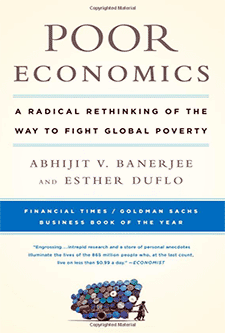 |
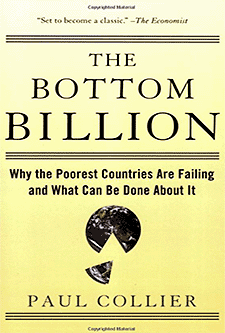 |
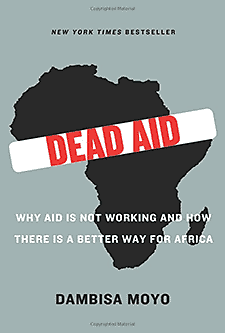 |
 |
|
Abhijit Banerjee / Esther Duflo (2012) Poor Economics.
A Radical Rethinking of the Way to Fight Global Poverty.
Public Affairs |
Paul
Collier (2008)
The Bottom Billion.
Why the Poorest Countries are Failing and What Can Be Done About It.
Oxford University Press |
Dambisa Moyo (2010)
Dead Aid.
Why Aid Is Not Working and How There Is a Better Way
For Africa.
Farrar, Straus and Giroux |
Robert D. Lupton (2012)
Toxic Charity.
How Churches and Charities Hurt Those They Help, And How to Reverse It.
Harper One |
|
|
|
|
|
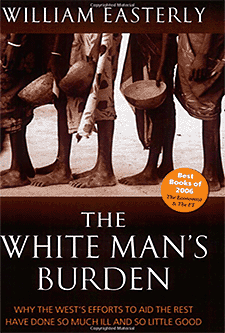 |
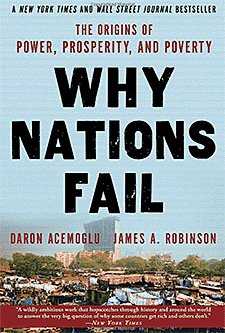 |
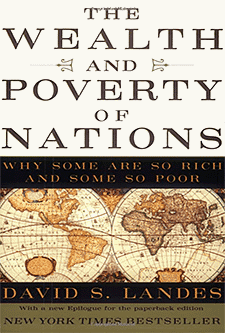 |
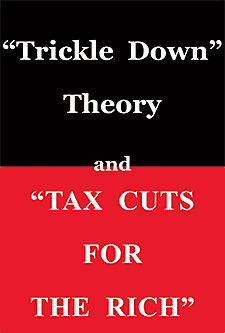 |
|
William Easterly (2007)
The White Man's Burden. Why the West's efforts to aid the rest have done so much ill and so little good. Penguin Books |
Daron Acemoglu / James Robinson (2013)
Why Nations Fail. The origins of power, prosperity, and poverty. Crown Business |
David S. Landes (1999)
The Wealth and Poverty of Nations. Why some are so rich and some are so poor.
W.W. Norton
|
Thomas Sowell (2012)
"Trickle Down Theory" and "Tax Cuts for the Rich".
Hoover Institution Press |
|
In Association
with
Amazon.com |
|
|
|
|
|
|
|
 |
Economic
development |
|
|
 Gross National Income (GNI, PPP)
(The World Bank) Gross National Income (GNI, PPP)
(The World Bank)
GNI per
capita based on purchasing power parity (PPP). PPP GNI is gross national income converted to international dollars using
purchasing power parity rates. An international dollar has the same purchasing power over GNI as a U.S. dollar has in the
United States. GNI is the sum of value added by all resident producers plus any product taxes (less subsidies) not
included in the valuation of output plus net receipts of primary income (compensation of employees and property income)
from abroad. Data are in current international dollars based on the 2011 International Comparison Program round. |
|
 Competitive Industrial Performance
(CIP) Index
(UNIDO) Competitive Industrial Performance
(CIP) Index
(UNIDO)
UNIDO's
Competitive Industrial Performance (CIP) Index 2011 is to be released in 2014. The CIP index benchmarks national
industrial performance of 118 countries using indicators of an economy's ability to produce and export manufactured goods
competitively. An interactive map allows the user to explore the index across countries. (Index page sometimes does not
work in Netscape Explorer). |
|
 Foreign Direct Investment
(IMF / UNCTAD / The World Bank) Foreign Direct Investment
(IMF / UNCTAD / The World Bank)
Foreign
direct investment are the net inflows of investment to acquire a lasting management interest (10 percent or more of voting
stock) in an enterprise operating in an economy other than that of the investor. It is the sum of equity capital,
reinvestment of earnings, other long-term capital, and short-term capital as shown in the balance of payments. This series
shows net inflows (new investment inflows less disinvestment) in the reporting economy from foreign investors. Data are in
current U.S. dollars. |
|
 Central Government Dept
(IMF/ The World Bank / NSOs / OECD) Central Government Dept
(IMF/ The World Bank / NSOs / OECD)
Central
Government Debt is the entire stock of direct government fixed-term contractual obligations to others outstanding on a
particular date. It includes domestic and foreign liabilities such as currency and money deposits, securities other than
shares, and loans. It is the gross amount of government liabilities reduced by the amount of equity and financial
derivatives held by the government. Because debt is a stock rather than a flow, it is measured as of a given date, usually
the last day of the fiscal year. |
|
 Total Reserves
(The World Bank /IMF) Total Reserves
(The World Bank /IMF)
Total
reserves comprise holdings of monetary gold, special drawing rights, reserves of IMF members held by the IMF, and holdings
of foreign exchange under the control of monetary authorities. The gold component of these reserves is valued at year-end
(December 31) London prices. Data are in current U.S. dollars. |
|
 World Economic Outlook Database
(International Monetary Fund - IMF) World Economic Outlook Database
(International Monetary Fund - IMF)
The World
Economic Outlook database, prepared by the International Monetary Fund, contains estimates and projections for a large
range of macro-economic indicators - including GDP, GDP per capita, GDP PPP, investment, Gross National Savings,
inflation, volume of imports and exports of services and goods, employment, unemployment, government revenue, government
expenditures, government lending and borrowing, balance of payment, etc. The data can be downloaded for 189 countries
worldwide. |
|
 Financial Soundness Indicators
(International Monetary Fund - IMF) Financial Soundness Indicators
(International Monetary Fund - IMF)
The
Financial Soundness Indicators (FSIs) were developed by the IMF, together with the international community, with the aim
of supporting macro-prudential analysis and assessing strengths and vulnerabilities of financial systems.
Methodology...
Metadata... |
|
 Global Financial Centres Index
(Z/Yen Group and Qatar Financial Centre Authority, UK, Qatar) Global Financial Centres Index
(Z/Yen Group and Qatar Financial Centre Authority, UK, Qatar)
The
GFCI provides profiles, rating and rankings for 83 financial centres, drawing on two separate sources of data -
instrumental factors (external indices) and responses to an online survey.
 FGFCI 16 (September, 2014: Full Report) FGFCI 16 (September, 2014: Full Report) |
|
 Financial Development Index
(World Economic Forum; Switzerland, USA, China) Financial Development Index
(World Economic Forum; Switzerland, USA, China)
The
Financial Development Index provides a score and rank for the breadth, depth, and efficiency of 62 of the world’s leading
financial systems and capital markets. The Index analyzes drivers of financial system development that support economic
growth, and thus compares the overall competitiveness of financial systems. Ultimately, the Report aims to serve as a tool
for both advanced and emerging economies to benchmark themselves, thereby allowing them to identify and prioritize areas
for reform.
 Full Report Full Report |
|
 IMD World Competitiveness Ranking
(IMD World Competitiveness Center, Switzerland) IMD World Competitiveness Ranking
(IMD World Competitiveness Center, Switzerland)
The
rankings measure how well countries manage their economic and human resources to increase their prosperity.
 Ranking Ranking
 5-yer comparison of ranking 5-yer comparison of ranking
 Methodology Methodology
 Press Release Press Release |
|
 Global Competitiveness Index
(World Economic Forum; Switzerland, USA, China) Global Competitiveness Index
(World Economic Forum; Switzerland, USA, China)
Since 2004,
the Global Competitiveness Report ranks countries based on the Global Competitiveness Index, developed by Xavier
Sala-i-Martin and Elsa V. Artadi.
Report...
Data... |
|
 Ease of Doing Business
(The
World Bank) Ease of Doing Business
(The
World Bank)
The ease
of doing business index ranks economies from 1 to 189. For each economy the ranking is calculated as the simple average of
the percentile rankings on each of the 10 topics included in the index in
Doing Business 2014: starting a business, dealing with construction permits, getting electricity, registering property,
getting credit, protecting investors, paying taxes, trading across borders, enforcing contracts and resolving insolvency. |
| |
|
|
Advertisement: Smart books from Amazon.com |
|
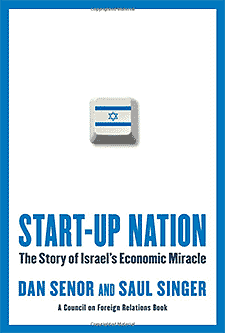 |
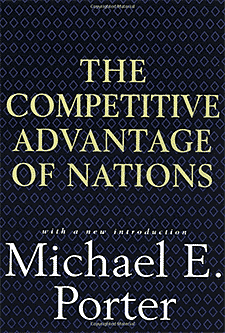 
|
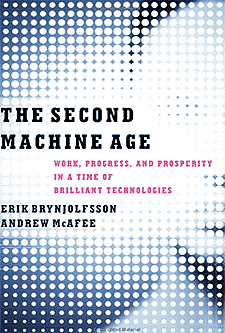 |
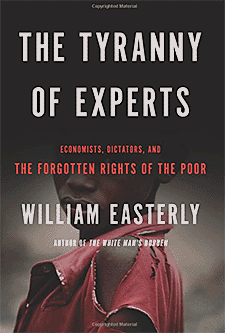 |
|
Dan Senor / Saul Singer (2011)
Start-up Nation.
The Story of Israel's Economic Miracle
Twelve |
Michael E. Porter (1998)
Competitive Advantage of Nations. Free Press |
Erik Brynjolfsson / Andrew McAfee (2014) The Second Machine Age. Work, Progress, and Prosperity in a Time of Brilliant Technologies.
W.W. Norton & Company |
William Easterly (2014)
The Tyranny of Experts. Economists, Dictators, and the Forgotten Rights of the Poor.
Basic Books |
|
In Association
with
Amazon.com |
|
|
|
|
|
 Index of Economic Freedom
(The
Heritage Foundation / Wall Street Journal, USA) Index of Economic Freedom
(The
Heritage Foundation / Wall Street Journal, USA)
The index covers 10 freedoms €“ from property rights to
entrepreneurship €“ in 186 countries.
See also:
Comparison of freedom indices (WikipediA) |
|
 Index of Economic Freedom of the World (Cato Institute, USA / Fraser Institute, Canada) Index of Economic Freedom of the World (Cato Institute, USA / Fraser Institute, Canada)
The foundations of economic freedom are personal choice,
voluntary exchange, and open markets. Economic Freedom of the World seeks to measure the consistency of the institutions
and policies of various countries with voluntary exchange and the other dimensions of economic freedom. |
|
 Index of Economic Complexity (Center
for International Development at Harvard University, USA) Index of Economic Complexity (Center
for International Development at Harvard University, USA)
The
Ranking of Economic Complexity is part of the CID Atlas of Economic Complexity. It is an interactive tool that enables
users to visualize a country’s total trade, track how these dynamics change over time and explore growth opportunities for
more than a hundred countries worldwide. The atlas includes time-series data of import and exports over time, as well as
predictions of GDP based on the productive capabilities expressed in trade dynamics. |
|
 GINI Index (The
World Bank) GINI Index (The
World Bank)
The Gini
index measures the extent to which the distribution of income (or, in some cases, consumption expenditure) among
individuals or households within an economy deviates from a perfectly equal distribution. A Lorenz curve plots the
cumulative percentages of total income received against the cumulative number of recipients, starting with the poorest
individual or household. The Gini index measures the area between the Lorenz curve and a hypothetical line of absolute
equality, expressed as a percentage of the maximum area under the line. Thus a Gini index of 0 represents perfect
equality, while an index of 100 implies perfect inequality.
More ...
More ... |
|
 The Global Innovation Index
(Cornell University, USA / INSEAD, France / WIPO) The Global Innovation Index
(Cornell University, USA / INSEAD, France / WIPO)
The GII
ranking covers 142 economies, accounting for 94.9% of the world€™s population and 98.7% of the world€™s Gross Domestic
Product (in US dollars). The GII has established itself as the reference among innovation indices, and has evolved into a
valuable benchmarking tool to facilitate public-private dialogue. |
|
 Index of Most Innovative Countries in
the World (Bloomberg Rankings) Index of Most Innovative Countries in
the World (Bloomberg Rankings)
The index
measures R&D intensity, productivity, high-tech density, researcher concentration, manufacturing capability, tertiary
efficiency and patent activity. |
|
 Legatum Prosperity Index (Legatum
Institute, UK) Legatum Prosperity Index (Legatum
Institute, UK)
Global measurement of prosperity based on both income and
wellbeing. |
|
 The Commitment to Development Index (Center for Global Development, USA) The Commitment to Development Index (Center for Global Development, USA)
Each
year, the CDI ranks wealthy governments on how well they are living up to their potential to help poor countries. The
Index scores seven policy areas that affect the well-being of others around the world: aid, trade, finance, migration,
environment, security, and technology. Overall scores are the average of scores in theses policy areas. |
|
 Index of Globalization (KOF Swiss Economic Institute, ETH ZĂĽrich, Switzerland ) Index of Globalization (KOF Swiss Economic Institute, ETH ZĂĽrich, Switzerland )
The Index
of Globalization measures three dimensions of globalization: economic, social, and political.
In addition an overall index of globalization and sub-indices referring to actual economic flows, economic restrictions,
data on information flows, data on personal contact, and data on cultural proximity are calculated. Data are available on
a yearly basis for 207 countries over the period 1970 - 2011. |
|
 Index of Global Destination Cities:
Cross-border Travel & Expenditures (MasterCard) Index of Global Destination Cities:
Cross-border Travel & Expenditures (MasterCard)
Destination cities are ranked globally in terms of the number of their total international visitor arrivals and
cross-border spending by these same visitors in the destination cities.
More ... |
|
 The Big Mac Index (The Economist, UK) The Big Mac Index (The Economist, UK)
The Big
Mac index was invented by The Economist in 1986 as a lighthearted guide to whether currencies are at their €ścorrect€ť
level. It is based on the theory of purchasing-power parity (PPP), the notion that in the long run exchange rates should
move towards the rate that would equalize the prices of an identical basket of goods and services (in this case, a burger)
in any two countries.
More ... |
|
 Travel and Tourism Competitiveness (World Economic Forum; Switzerland,
USA, China) Travel and Tourism Competitiveness (World Economic Forum; Switzerland,
USA, China)
The
Travel & Tourism Competitiveness Report assesses 141 economies worldwide based on the extent to which they are putting in
place the factors and policies to make it attractive to develop the travel and tourism sector. Read the full news release
for more information..
More ...
More ... |
|
 Tourism Market Trends (United Nations World Tourism Organization - UNWTO) Tourism Market Trends (United Nations World Tourism Organization - UNWTO)
The World
Tourism Market Trends provide rankings on international tourism in the world. In the publication, UN regions and sub-regions are ranked by the number of international visitor
arrivals, by the revenue generated by inbound tourism, and by the expenditures of outbound travelers.
More ...
More ... |
|
 Global Built Environment Wealth Index
(EC Harris, Built Asset Consultancy / CEBR) Global Built Environment Wealth Index
(EC Harris, Built Asset Consultancy / CEBR)
Conducted in conjunction with the Centre for Economic and Business Research, the Global Built Asset Wealth Index
quantifies the accumulated wealth of 30 countries’ built assets – encompassing all the property and infrastructure that
contributes to economic productivity – to present an alternative indicator of economic health and growth potential.
 Full Report (pdf) Full Report (pdf)
 Info-Graphic (pdf) Info-Graphic (pdf) |
|
 Shadow Economies of 162 countries
(Schneider, F. / Buehn, A. / Montenegro, C.E.; The World Bank) Shadow Economies of 162 countries
(Schneider, F. / Buehn, A. / Montenegro, C.E.; The World Bank)
This
World Bank policy research working paper presents estimations of the shadow economies for 162 countries, including
developing, Eastern European, Central Asian, and high-income countries over the period 1999 to 2006/2007..
 Full Paper (pdf) Full Paper (pdf) |
| |
|
|
Advertisement: Smart books from Amazon.com |
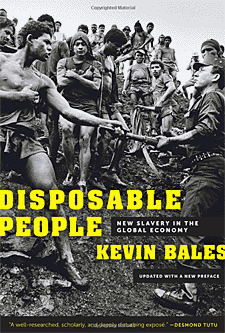 |
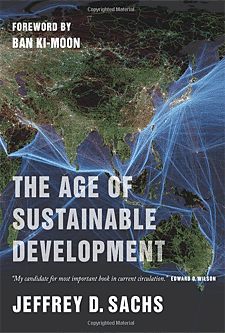 |
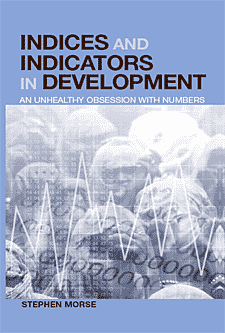 |
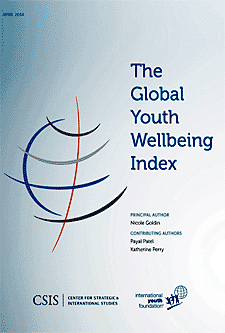 |
|
Kevin Bales (2012)
Disposable People. New slavery in the global economy.
University of California Press |
Jeffrey D. Sachs (2015)
The Age of Sustainable Development.
Columbia University Press |
Stephen Morse (2004): Indices and
Indicators in Development: An Unhealthy Obsession with Numbers. Routledge. |
Nicole Goldin / Payal Patel / Katherine Perry (2014): The Global Youth Wellbeing Index. Center for Strategic and International Studies
(CSIS) |
|
In Association
with
Amazon.com |
|
|
|
|
|
 |
Political
development, governance, freedom of the press |
|
|
 WJP Open
Government Index
(World Justice Project, USA) WJP Open
Government Index
(World Justice Project, USA)
The
World Justice Project (WJP) Open Government Index is the first effort to measure government openness based on the general
public’s experiences and perceptions worldwide. The Index presents aggregated scores and rankings as well as individual
scores for each of the following dimensions of government openness: (a) publicized laws and government data, (b) right to
information, (c) civic participation, and (d) complaint mechanisms. WJP was founded by William H. Neukom in 2006 as a
presidential initiative of the American Bar Association. It is initially supported by 21 other strategic partners. Since
2009, the World Justice Project is an independent non-profit organization. Its offices are located in Washington, DC, and
Seattle, WA, USA.
 Full 2013 Report Full 2013 Report
 Global Scores and Rankings Global Scores and Rankings |
|
 World Giving Index
(Charities Aid Foundation, United Kingdom) World Giving Index
(Charities Aid Foundation, United Kingdom)
The
World Giving Index looks at charitable behavior across the world, involving more than 130 countries. The report is based
on more than half a million interviews conducted by Gallup since 2005/06, as part of their World Poll survey. The World
Giving Index score is based on an average of three measures of giving behavior - the percentage of people who, in a
typical month, donate money to charity, volunteer their time, and help a stranger. The three behaviors are also looked at
on an individual basis within the report.
 Full Report Full Report
 Info-Graphic Info-Graphic |
|
 Corruption Perception Index
(Transparency International, Germany) Corruption Perception Index
(Transparency International, Germany)
Measures the perceived levels of public sector corruption in 177
countries & territories. First launched in 1995. |
|
 Global Democracy Ranking
(Democracy
Ranking Association, Austria) Global Democracy Ranking
(Democracy
Ranking Association, Austria)
The
Democracy Ranking is an annual ranking of all democracies in the world by focusing on the quality of Democracy in an
international perspective. It includes the following dimensions: Politics, gender, economy, knowledge, health and the
environment. See also:
Comparison of freedom indices (WikipediA) |
|
 Democracy Index
(Economist Intelligence Unit, UK) Democracy Index
(Economist Intelligence Unit, UK)
The index provides a snapshot of the state of democracy worldwide for 165 independent states
and two territories. The Economist Intelligence Unit€™s Index of Democracy is based on five categories: electoral process
and pluralism; civil liberties; the functioning of government; political participation; and political culture. |
|
 Transformation Index
(Bertelsmann Stiftung, Germany) Transformation Index
(Bertelsmann Stiftung, Germany)
The Bertelsmann Stiftung€™s Transformation Index evaluates the quality of democracy, a market
economy and political management in 129 developing and transition countries. It measures successes and setbacks on the
path toward a democracy based on the rule of law and a socially responsible market economy. |
|
 World Press Freedom Index
(Reporters Without Borders, France) World Press Freedom Index
(Reporters Without Borders, France)
The World
Press Freedom Index spotlights the negative impact of conflicts on freedom of information and its protagonists.
More...
See also:
Comparison of freedom indices (WikipediA) |
|
 Freedom in the World
(Freedom
House, USA) Freedom in the World
(Freedom
House, USA)
Ranks countries according to political rights and civil
liberties. The ratings represent global events from 1 January 2013, through 1 December 2013. Freedom House is an
independent watchdog organization dedicated to the expansion of freedom around the world. It is located in Washington, DC
and New York, NY.
See also:
Comparison of freedom indices (WikipediA) |
|
 The World Governance Indicators
(The World Bank) The World Governance Indicators
(The World Bank)
The
Worldwide Governance Indicators project constructs aggregate indicators of six broad dimensions of governance: Voice and
Accountability, Political Stability and Absence of Violence/Terrorism, Government Effectiveness, Regulatory Quality, Rule
of Law, Control of Corruption. The six aggregate indicators are based on 31 underlying data sources reporting the
perceptions of governance of a large number of survey respondents and expert assessments worldwide.
More ... |
|
 Political Instability Index
(Economist Group, Economist Intelligence Unit, UK) Political Instability Index
(Economist Group, Economist Intelligence Unit, UK)
The
Political Instability Index shows the level of threat posed to governments by social protest. The index scores are derived
by combining measures of economic distress and underlying vulnerability to unrest. The index covers the period 2009/10,
and scores are compared with results for 2007.
More... |
|
|
|
|
Advertisement: Smart books from Amazon.com |
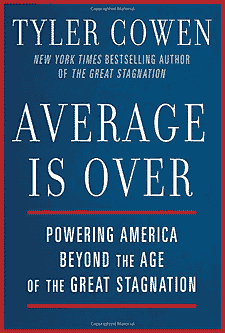 |
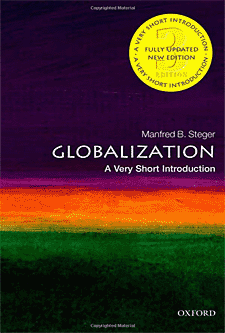 |
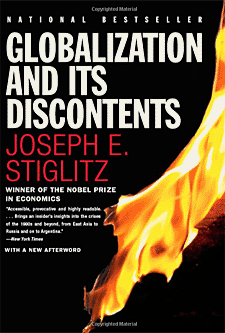 |
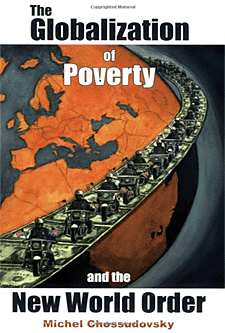 |
|
Tyler Cowen (2013)
Average Is Over: Powering America Beyond the Age of
the Great Stagnation.
Dutton Adult |
Manfred Steger (2013)
Globalization: Avery Short Introduction.
Oxford University Press |
Joseph E. Stiglitz (2003)
Globalization and Its Discontents.
W.W. Norton & Company |
Michel Chossudovsky (2003)
The Globalization of Poverty and the New World Order.
Global research |
|
|
In Association
with
Amazon.com |
|
| |
|
|
|
 |
Conflict, war,
terrorism |
|
|
|
 The Military Balance (International Institute for Strategic Studies - IISS, UK) The Military Balance (International Institute for Strategic Studies - IISS, UK)
The
Military Balance is the IISS annual assessment of the military capabilities and defense economics of 171 countries
worldwide. It list each country€™s military organization, personnel numbers, equipment inventories, and relevant economic
and demographic data. Regional and select country analyses cover the major developments affecting defense policy and
procurement, and defense economics.
More ...
Commentary: The full report (The Military Balance 2014 )
is rather expensive. )
is rather expensive. |
|
 Global Militarization Index (Bonn International Center for Conversion, Germany) Global Militarization Index (Bonn International Center for Conversion, Germany)
The
Global Militarization Index (GMI) attempts to objectively depict worldwide militarization since 1990. The index compares a
country€™s military expenditure with its Gross Domestic Product (GDP) and its health expenditures. It contrasts the total
number of military and paramilitary forces in a country with the number of physicians. Finally, it studies the number of
heavy weapons available to a country€™s armed forces. These and other indicators are used to determine a country€™s ranking.
More ... |
|
 Armed Conflict Database (International Institute for Strategic Studies - IISS, UK) Armed Conflict Database (International Institute for Strategic Studies - IISS, UK)
The Armed
Conflict Database (ACD) monitors armed conflicts worldwide, focusing on political, military and humanitarian trends in
current conflicts, whether they are local rebellions, long-term insurgencies, civil wars or inter-state conflicts.
More ...
Comment: Data available only through rather expensive
subscription. |
|
 Global Peace Index (Vision of Humanity, Institute for Economics and Peace, New York, Sidney) Global Peace Index (Vision of Humanity, Institute for Economics and Peace, New York, Sidney)
The
Global Peace Index ranks the nations of the world according to 22 qualitative and quantitative indicators of peace. The
index measures levels of internal and external conflict, safety of citizens, and levels of militarization. The lower the
score, the more peaceful the country.
More ...
More ... |
|
 Global Terrorism Index (Vision of Humanity, Institute for Economics and Peace, New York, Sidney) Global Terrorism Index (Vision of Humanity, Institute for Economics and Peace, New York, Sidney)
The
Global Terrorism Index measures the impact of terrorism in 158 countries. To account for the lasting effects of terrorism,
each country is given a score that represents a five year weighted average.
More ... |
|
|
|
|
|
|
Advertisement: Smart books from Amazon.com |
|
 |
 |
 |
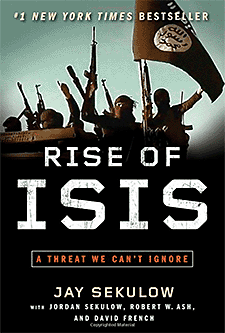 |
|
P.W. Singer / Allan Friedman (2014)
Cybersecurity and Cyberwar. What Everyone needs to know.
Oxford University Press |
P.W. Singer (2009)
Wired for War. The Robotics Revolution and Conflict in the 21st Century
Penguin Books |
Richard Whittle (2014)
Predator. The Secret Origins of the Drone Revolution.
Henry Holt & Co. |
Jay Sekulow / Jordan Sekulow (2014)
Rise of ISIS. A Threat We Can't Ignore.
Howard Books |
|
| |
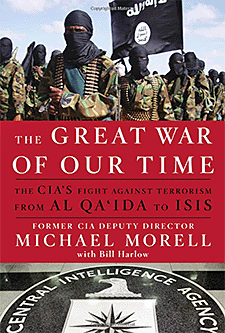 |
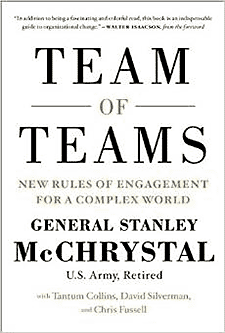 |
 |
 |
|
Michael Morell (2015)
The Great War of Our Time. The CIA's fight against terrorism - from al Qa'ida to ISIS. Twelve |
Gen. Stanley McCrystal et al. (2015)
Team of Teams. New rules of engagement for a complex world. Portfolio |
Robert M. Gates (2015)
Duty. Memoirs of a Secretary
of War. Vintage Reprint Ed. |
Erick Stakelbeck (2015)
ISIS Exposed. Beheadings, slavery, and the hellish reality of radical Islam. Regnery Publishing |
|
In Association with Amazon.com |
|
|
|
|
| |
|
|
|
|
 |
Information &
computer technology; media |
|
|
 The Networked Readiness Index
(World Economic Forum; Switzerland, USA, China) The Networked Readiness Index
(World Economic Forum; Switzerland, USA, China)
The
Networked Readiness Index measures, on a scale from 1 (worst) to 7 (best), the performance of 148 economies in leveraging
information and communications technologies to boost competitiveness and well-being.
 Ranking (pdf) Ranking (pdf)
 The Global Information Technology
Report (pdf) The Global Information Technology
Report (pdf) |
|
 ICT Development Index (International Telecommunication Union - ITU) ICT Development Index (International Telecommunication Union - ITU)
The ICT
Development Index (IDI) ranks 155 countries€™ performance with regard to information and communication technology (ICT)
infrastructure and uptake.
Worldwide ICT Data (EXCEL)...
More ... |
|
 Global Cyber Security Index (International Telecommunication Union - ITU) Global Cyber Security Index (International Telecommunication Union - ITU)
Ranks the
cyber security capabilities of nation states. It measures cyber security within five categories: legal measures, technical
measures, organizational measures, capacity building and cooperation |
|
 World Internet Usage (Miniwatts Marketing Group, USA) World Internet Usage (Miniwatts Marketing Group, USA)
Data on Internet
user, Internet penetration and Facebook subscribers from various sources for all countries of the world. |
|
 Web Index (World
Wide Web Foundation) Web Index (World
Wide Web Foundation)
Taking
the format of an 81 country ranking, the Web Index is the world€™s first measure of the World Wide Web€™s contribution to
development and human rights globally. Scores are given in the areas of access; freedom and openness; relevant content;
and empowerment. First released in 2012, the 2013 Index has been expanded and refined to include 20 new countries and
features an enhanced data set, particularly in the areas of gender, Open Data, privacy rights and security. First released
in 2013.
Web Index Structure ... |
| |
|
|
Advertisement: Smart books from Amazon.com |
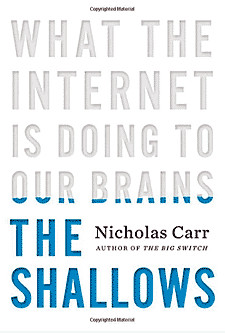 |
 |
 |
 |
|
Nicholas Carr (2011)
The Shallows.
What the Internet is Doing
to Our Brains.
W.W. Norton & Company |
Clive Thompson (2014)
Smarter Than You Think.
How technology is changing
our minds for the better.
Penguin Books |
Manuel Castells (2012)
Network of Outrage and Hope. Social movements in the Internet Age.
Politi |
The Washington Post (2013)
NSA Secrets.
Government spying in the Internet Age.
Amazon Digital Services |
|
In Association
with
Amazon.com |
|
|
|
|
|
|
|
|
 |
Culture,
religion, ethnicity, language |
|
|
 World Values Survey
(World Values Survey Association)
World Values Survey
(World Values Survey Association)
The
World Values Survey is a global network of social scientists studying changing values and their impact on social and
political life, led by an international team of scholars, with the WVS association and secretariat headquartered in
Stockholm, Sweden.
The survey, which started in 1981, seeks to use the most rigorous, high-quality research designs in each country. The WVS
consists of nationally representative surveys conducted in almost 100 countries which contain almost 90 percent of the
world’s population, using a common questionnaire.
More ... |
|
 Index of Linguistic Diversity (Terralingua, USA) Index of Linguistic Diversity (Terralingua, USA)
The Index
of Linguistic Diversity is the first-ever quantitative measure of global trends in linguistic diversity. It measures
changes in the number of mother-tongue speakers of a globally representative sample of the world€™s languages.
More ... |
|
 Global Religious Diversity Index (Pew
Research, USA) Global Religious Diversity Index (Pew
Research, USA)
Ranking
of more than 200 countries by religious diversity.
More ... |
|
 Religiosity and Atheism Index (WIN-Gallup, International) Religiosity and Atheism Index (WIN-Gallup, International)
The
Religiosity and Atheism Index measures global self-perceptions on beliefs. It is based on interviews with more than 50,000
men and women selected from 57 countries across the globe in five continents.
More ... |
|
 Anti-Semitism Index (Anti-Defamation League, USA) Anti-Semitism Index (Anti-Defamation League, USA)
The
index, comprised of 11 questions, was developed by researchers at the University of California to be used in public
opinion surveys to provide an analytical tool for identifying respondents who harbor anti-Semitic attitudes and for
measuring general acceptance of various negative Jewish stereotypes. The index is based on surveys in more than 100
countries. |
| |
|
|
Advertisement: Smart books from Amazon.com |
 |
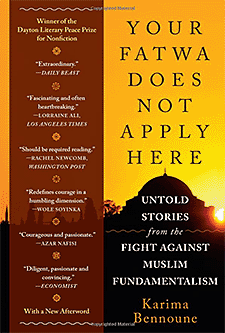 |
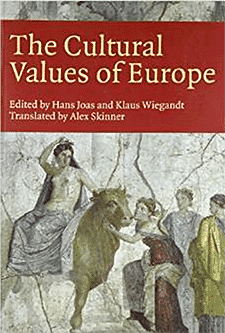 |
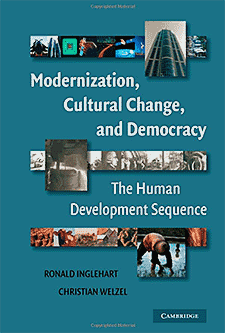 |
|
Bernard Goldberg (2005)
100 People Who Are Screwing Up America (And Al Franken is #37). Harper |
Karima Bennoune (2014)
Your Fatwa Does Not Apply Here. Untold stories from the fight against Muslim Fundamentalism. W.W. Norton |
Hans Joas / Klaus Wiegandt (Eds.)
The Cultural Values of Europe. Liverpool University Press. |
Ronald Inglehart / Christian Welzel
(2005)
Modernization, Cultural Change, and Democracy. The human development sequence. Cambridge University Press |
|
In Association
with
Amazon.com |
|
|
|
|
|
|
|
 |
Food, nutrition,
agriculture |
|
|
 Food Production Index (The World Bank) Food Production Index (The World Bank)
The food
production index covers food crops that are considered edible and that contain nutrients. Coffee and tea are excluded
because, although edible, they have no nutritive value. |
|
 Livestock Production Index (The World Bank) Livestock Production Index (The World Bank)
The
livestock production index includes meat and milk from all sources, dairy products such as cheese, and eggs, honey, raw
silk, wool, and hides and skins. |
|
 Global Hunger Index (International Food Policy Research Institute - IFPRI, USA) Global Hunger Index (International Food Policy Research Institute - IFPRI, USA)
To
reflect the multidimensional nature of hunger, the GHI combines three equally weighted indicators in one index number: Undernourishment:
the proportion of undernourished as a percentage of the population; child underweight:
the proportion of children younger than the age of five who are underweight, which is one indicator of child
under-nutrition; and child mortality: the mortality rate of children younger
than the age of five - partially reflecting the fatal synergy of inadequate dietary intake and unhealthy environments.
|
|
 Global Food Security Index (Economist Group, UK. Sponsored by Du Pont) Global Food Security Index (Economist Group, UK. Sponsored by Du Pont)
Using a
definition adapted from the 1996 World Food Summit, the Global Food Security Index considers the core issues of
affordability, availability, and quality across a set of 107 countries. The index is a dynamic quantitative and
qualitative scoring model, constructed from 27 unique indicators, that measures these drivers of food security across both
developing and developed countries.
More ...
More ...
Comment: Apparently, the index
data can be downloaded only after registration and for only one country at a time. |
|
 Global Database on Body Mass Index (WHO, Geneva) Global Database on Body Mass Index (WHO, Geneva)
The
global epidemic of overweight and obesity is rapidly becoming a ajor public health problem in many parts of the world.
Paradoxically coexisting with under-nutrition in developing countries, the increasing prevalence of overweight and obesity
is associated with many diet-related chronic diseases. This database provides both national and sub-national adult
underweight, overweight and obesity prevalence rates by country, year of survey and gender.
More ... |
|
|
|
 |
Science, education
&
training |
|
|
|
|
 Academic Ranking of World Universities (Center
for World-Class Universities of Shanghai Jiao Tong University) Academic Ranking of World Universities (Center
for World-Class Universities of Shanghai Jiao Tong University)
The
Academic Ranking of World Universities (ARWU) has been focusing on the study of world-class universities for many years,
published the first Chinese-language book titled world-class universities and co-published the first English book titled
world-class universities with European Centre for Higher Education of UNESCO. |
 World University Ranking
(Times
Higher Education, TSL, London, UK) World University Ranking
(Times
Higher Education, TSL, London, UK)
The Times
Higher Education World University Rankings 2013-2014 powered by Thomson Reuters are the only global university performance
tables to judge world class universities across all of their core missions - teaching, research, knowledge transfer and
international outlook. The top universities rankings employ 13 carefully calibrated performance indicators to provide the
most comprehensive and balanced comparisons available, which are trusted by students, academics, university leaders,
industry and governments.
 Rankings Rankings
 Analyses Analyses
 Methodology Methodology
|
| |
|
|
Advertisement: Smart and controversial books from Amazon.com |
 |
 |
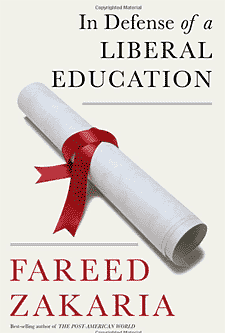 |
 |
|
Bill Nye (2014)
Undeniable. Evolution and the science of creation.
St. Martin's Press |
Stephen Hawking (1998)
A Brief History of Time.
Bantam |
Fareed Zakaria (2015)
In Defense of a Liberal Education.
W. W. Norton |
Ben Shapiro (2004)
Brainwashed. How universities indoctrinate America's youth. Thomas Nelson. |
|
|
|
|
|
|
In Association
with
Amazon.com |
|
|
|
|
|
|
|
 List of Nobel Laureates by Country of
Birth (The Official Web Site of the Nobel Price) List of Nobel Laureates by Country of
Birth (The Official Web Site of the Nobel Price)
This
website provides the names and birth places of all Nobel price laureates since 1901. The information is also available by
price category (physics, chemistry, medicine or physiology, literature, peace and economic sciences. |
|
 Global Index of Cognitive Skills and
Educational Attainment (The Economist, UK) Global Index of Cognitive Skills and
Educational Attainment (The Economist, UK)
The
Global Index of Cognitive Skills and Educational Attainment compares the performance of 39 countries and one region (Hong
Kong) on two categories of education: Cognitive Skills and Educational Attainment.
The indicators used in this Index are: (1) Cognitive Skills: PISA, TIMSS and PIRLS scores in Reading, Math and Science),
(2) Educational Attainment: literacy and graduation rates.
More ...
More ...
More ... |
 Space Competitive
Index
(Futron / Avasecent, TSL, London, UK) Space Competitive
Index
(Futron / Avasecent, TSL, London, UK)
Futron's Space Competitiveness Index provides annual statistical benchmarks, analysis, and business intelligence into
national space activities. The report's insights into the underlying drivers of aerospace competitiveness – Government,
Human Capital and Industry – offer intelligence and perspective useful to any space decision-maker.
Comment: Only available for a very high price.
 Purchasing Options Purchasing Options
|
|
|
|
|
|
 |
Environment |
|
|
 Climate Change Performance Index
(Germanwatch) Climate Change Performance Index
(Germanwatch)
The
Climate Change Performance Index is an instrument supposed to enhance transparency in international climate politics. Its
aim is to encourage political and social pressure on those countries which have, up to now, failed to take ambitious
actions on climate protection as well as to highlight countries with best-practice climate policies. On the basis of
standardized criteria, the index evaluates and compares the climate protection performance of 58 countries that are,
together, responsible for more than 90 percent of global energy-related CO2 emissions. 80 percent of the evaluation is
based on objective indicators of emissions trend and emissions level. 20 percent of the index results are built upon
national and international climate policy assessments by more than 200 experts from the respective countries.
 Climate Change Performance Index 2015
(pdf) Climate Change Performance Index 2015
(pdf)
 CCPI - Tables and Maps (pdf) CCPI - Tables and Maps (pdf)
 CCPI - Background and Methodology
(pdf) CCPI - Background and Methodology
(pdf) |
|
 Real-time Air Quality Index
(aqicn.org, Beijing, China) Real-time Air Quality Index
(aqicn.org, Beijing, China)
Real-time
Air Quality Index for many countries and cities of the world.
Commentary: Fabulous! Why did none of the large
international environmental organizations come up with such an obvious application? |
|
 Environmental Performance Index (Yale University / Columbia University, USA) Environmental Performance Index (Yale University / Columbia University, USA)
The
Environmental Performance Index (EPI) ranks how well countries perform on high-priority environmental issues in two broad
policy areas: protection of human health from environmental harm and protection of ecosystems.
More ...
More ...
More ...
Commentary: The index does not include important aspects
of environmental harm, such as toxic chemical exposures, heavy metals (lead, cadmium, mercury) exposures, nuclear safety
issues, pesticide use, or freshwater quality (organic and industrial pollutants). Results, particularly for China, may
thus be biased. |
|
 Disaster Occurrence and Impact by
Country
(Centre for Research on the Epidemiology of Disasters - CRED, Universite Catholoque de Louvain, Belgium) Disaster Occurrence and Impact by
Country
(Centre for Research on the Epidemiology of Disasters - CRED, Universite Catholoque de Louvain, Belgium)
The EM-DAT database contains data and statistics on natural and technological disaster occurrence and their impact for the
different periods: 1900-2010, 1970-2010 and 1991-2010. They are all based on the data available at the OFDA/CRED
International Disasters Database (EM-DAT). The Center for Research on the Epidemiology of Disasters (CRED) has arranged
and provided such information according to country and thematic aggregations, as requested by the UN/ISDR secretariat.
Comment: Go to "advanced
search" to download data for all countries of the world in one step. These data can be used to rank
countries according to disaster occurrence and disaster impact. |
|
 AQASTAT - water-related Indicators
(Food and Agricultural Organization of the United Nations, FAO) AQASTAT - water-related Indicators
(Food and Agricultural Organization of the United Nations, FAO)
This
database has statistical information on water resources, water use, irrigation and drainage development, water
conservation agriculture and water harvesting, as well as indicators related to water and health. Data can be retrieved
for all countries of the world and all periods since the 1960s.
Commentary: The interface is not easy to use, but to my
knowledge this is the best water-related database available. |
|
 Environmental Vulnerability Index (South
Pacific Applied Geoscience Commission - SOPAC, United Nations Environment Programme - UNEP) Environmental Vulnerability Index (South
Pacific Applied Geoscience Commission - SOPAC, United Nations Environment Programme - UNEP)
The
Environmental Vulnerability Index is among the first of tools now being developed to focus environmental management at the
country level. The index utilizes 50 indicators to capture the key elements of environmental vulnerability, including
climate change, biodiversity, water, agriculture and fisheries, human health aspects, desertification and exposure to
natural disasters.
Results report ...
Technical report ...
Data Table ...
Commentary: The index has major shortcomings. Due to the
long list of rather specific indicators included, data availability (and probably quality) is poor. Not surprisingly, some
of the results appear to be rather strange. For instance, Austria has an EVI value of 369 and is therefore considered
"extremely vulnerable". Botswana, on the other hand, has a value of 181 and is identified as being "resilient"
(which is the highest category).
However, according to the BBC country profile, Botswana .. "is
sparsely populated, because it is so dry. The Kalahari desert, home to a dwindling band of bushman hunter-gatherers, makes
up much of the territory and most areas are too arid to sustain any agriculture other than cattle".
(BBC) |
|
 World Risk
Index
(Alliance Development Works; UNU-EHS; Universität Bonn; Germany) World Risk
Index
(Alliance Development Works; UNU-EHS; Universität Bonn; Germany)
The
World Risk Index, which was published for the first time in 2011, calculates this disaster risk for 171 countries
worldwide. The Index consists of indicators in the four components of exposure towards natural hazards such as
earthquakes, cyclones, flooding, drought and sea level rise, susceptibility depending on infrastructure, food, housing and
economic framework conditions, coping capacities depending on governance, risk reduction, early warning, healthcare,
social and material coverage and adaptive capacities related to future natural hazards and the impacts of climate change.
The Index is established per country via multiplying exposure to natural hazards with vulnerability, which comprises the
above-mentioned three components.
 The World Risk Report (pdf) The World Risk Report (pdf)
 Methodology (pdf) Methodology (pdf)
 Indicators (pdf) Indicators (pdf) |
|
|
|
 |
Other Indexes
and Rankings |
|
|
 Good Country Index
(Simon Anholt, Robert Govers, France) Good Country Index
(Simon Anholt, Robert Govers, France)
The
idea of the Good Country Index is to measure what each country on earth contributes to the common good of humanity, and
what it takes away. Using a wide range of data from the U.N. and other international organizations, we’ve given each
country a balance-sheet to show at a glance whether it’s a net creditor to mankind, a burden on the planet, or something
in between.
 Simon Anholt Simon Anholt
 Robert Govers Robert Govers |
|
 Global Energy Architecture
Performance Index
(World Economic Forum; Switzerland, USA, China) Global Energy Architecture
Performance Index
(World Economic Forum; Switzerland, USA, China)
The New
Energy Architecture initiative of the World Economic Forum strives to better understand the changes underway in the global
energy system, and how they can be managed to enable an effective transition. A core pillar of this work has been the
development of the Global Energy Architecture Performance Index.
 Full Report (pdf) Full Report (pdf) |
|
 Global Open Data Index
(Open Knowledge, United Kingdom)
Global Open Data Index
(Open Knowledge, United Kingdom)
The Global Open Data Index is an initiative of
Open Knowledge based on contributions from open data advocates and experts around the world. Each year, governments are
making more data available in an open format. The Global Open Data Index tracks whether this data is actually released in
a way that is accessible to citizens, media and civil society and is unique in crowd-sourcing its survey of open data
releases around the world. Each year the open data community and Open Knowledge produces an annual ranking of countries,
peer reviewed by our network of local open data experts. The Global Open Data Index measures and benchmarks the openness
of data around the world.
 About the index About the index
 Data
Data
 About Open Knowledge
About Open Knowledge |
|
|
|
|
|
|
Advertisement |
 |
 |
 |
 |
 |
|
Morten Jerven (2013): Poor Numbers: How We are Misled by African Development Statistics and What to Do about It? Cornell University
Press
|
Zachary Karabell (2014): The Leading Indicators: A Short History of the Numbers That Rule Our World.
Simon & Schuster |
Margaret O'Leary (2004): Measuring Disaster Preparedness: A Practical Guide to Indicator Development and Application. IUniverse |
Michael D.
Dulberger (2013): America's Ranking Among Nations: A Global Perspective of the United States In Graphic Detail.
Bernan Press |
The Worldwatch Institute (2014): State of the World 2014: Governing for Sustainability.
Island Press |
|
In Association
with
Amazon.com |
|
|
|
|
| |
|
|
| |
| |